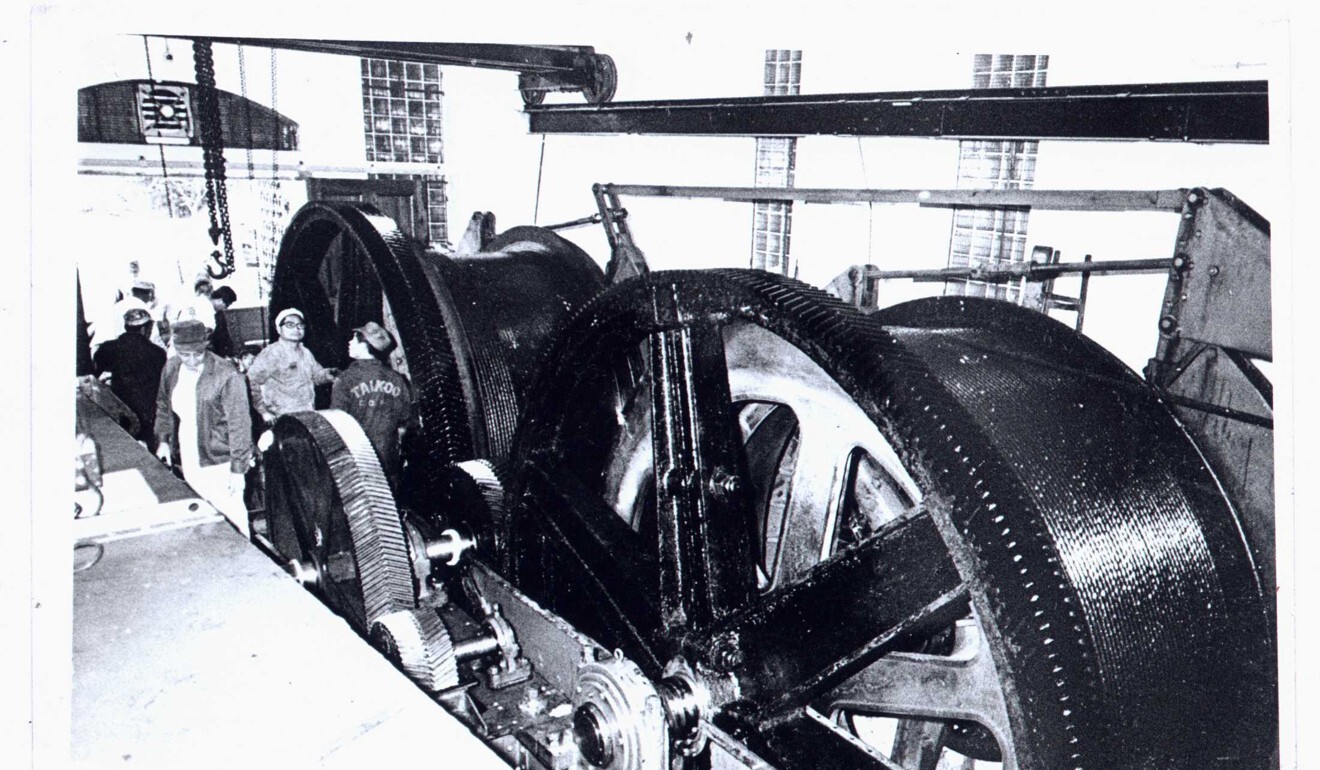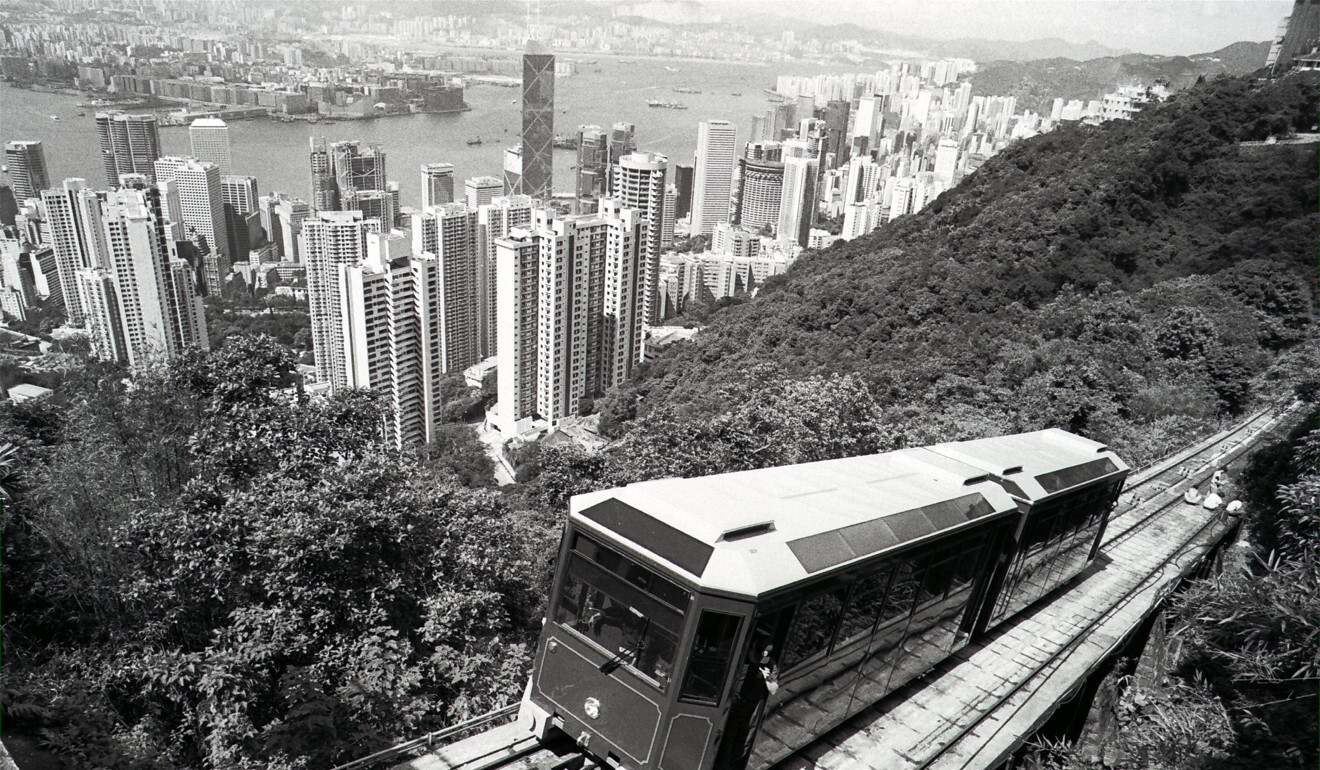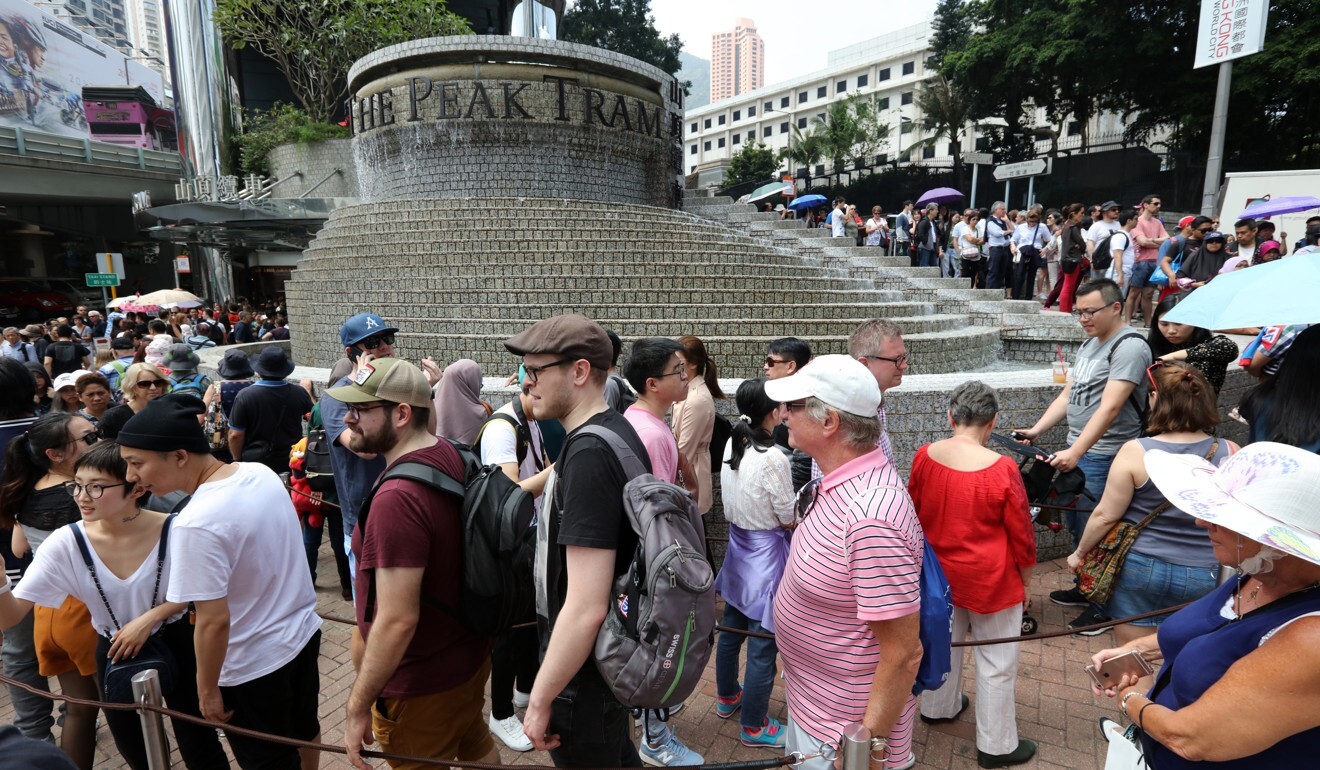
As it prepares to close for up to three months for renovations, a look at the history of Hong Kong’s iconic Peak Tram
- Services on the 130-year-old funicular will be suspended from April 23 for the first of two periods of upgrades
Emblematic of Hong Kong’s history is the Peak Tram. The image of the tramway chugging along its steep uphill journey – its deep red hue against the incline’s greenery – is dear in the hearts of Hongkongers.
Now in its 131st year of operations, the Peak Tram is about to undergo renovations for the first time since 1989. For up to three months from April 23, the tram will suspend its services as part of a HK$684 million dollar upgrade, which will be completed in early 2021. The overhaul will continue in late 2020, after a hiatus for the summer months. The project is privately funded by the Hongkong and Shanghai Hotels, Limited, who own the tram system.
According to the Peak Tramways Company, the upgrades will make the system much more passenger-friendly and efficient, resulting in a larger, “temperature-controlled” waiting area, and new carriages that will increase capacity from 120 to 210. Queuing times are projected to be reduced to around 20 minutes.

All in all, these renovations will involve relaying tracks, replacing control systems, and extending the tramway terminus to accommodate the expansions.
The Peak Tram has come a long way from its early days as a steam-powered funicular running up and down a wooden structure. In light of the upcoming renovations, City Weekend explores the colourful narratives behind one of Hong Kong’s beloved icons.

History
The Peak Tram is one of the world’s oldest, and steepest, funicular railways. Since opening in 1888, the tramway has become one of the city’s most popular tourist attractions, transporting over 6 million passengers every year up the steep incline on Hong Kong Island.
In 1881, Alexander Findlay Smith petitioned the governor of Hong Kong, Sir John Pope Hennessy, to commission a railway to bring passengers up to The Peak. Two years later, the government passed the legislation to pave the way for the project.
Findlay Smith travelled across Europe and North America for ideas, touring railways that were specifically designed to transport passengers up hills and mountains. His resulting design was seen as revolutionary – a technological and engineering marvel unlike anything else in Asia.

Construction began in September 1885. Much of the equipment was hauled up the mountain by local workers with no mechanical support.
On 28 May, 1888, governor Sir George William des Voeux officiated at the inauguration ceremony. The Peak Tram carried 800 passengers on its first day of operation, and around 150,000 that first year – a figure equivalent to 80 per cent of Hong Kong’s population at the time. Initial round-trip tickets ranged from 10 to 30 cents, depending on class.
Hong Kong’s famous Peak Tram to shorten its journey by 70 metres
From 1909 to 1949, the first two seats on the Peak Tram were reserved for the governor, and would only be released to others two minutes before departure.
Until 1926, when electric motors replaced the steam engine that powered the tram, seating was divided into three class categories. First class was for colonial officials and Peak residents; second class was for the military and police; and third class was for all others and animals.

The tram has fallen victim to natural disasters twice – once in 1899, and a second time in 1966 – when heavy rain and floods washed away the sections of the track between Bowen and Kennedy Roads.
During the Battle of Hong Kong in December 1941, the tram’s engine room was damaged in an attack, suspending services until the Japanese occupation ended on August 30, 1945. During the occupation, the tramway was used to transport arms to barracks on The Peak.
Six of Hong Kong’s biggest transport achievements
In 1956, the trams were replaced with a new generation of lightweight metal cars, each seating 62 passengers. An upgrade came once more in 1989, when a computerised control system, new tracks, and the two-car trams used today were introduced.
Route
The Peak Tram begins its journey on Garden Road in Admiralty, and ends 150 metres below the summit of Victoria Peak at its Upper Terminus. There are four request-only stops along the way: Kennedy Road, MacDonnell Road, May Road, and Barker Road.
This route, travelling through the Mid-Levels, accelerated the development of the high-end residential area.

The tram runs at 10- to 15-minute intervals. The journey takes about eight minutes, cutting through 1.4km of mountainous vegetation, dropping passengers to an elevation 370 metres higher than where they began.
In March 2018, tram fares rose for the second time in two years, this time by around 16 per cent as one-way adult tickets went from HK$32 to HK$37. The rise was introduced to offset staffing salaries and necessary repair work.
Peak Tram service cancelled as power failure leaves tourists disappointed
Optical illusion
As the Peak Tram begins its journey up the steep gradient of between 4 and 27 degrees, passengers are treated to a strange optical illusion as the high-rise buildings on either side slowly appear to fall towards the hillside.
This effect is unique to the Peak Tram, and is more pronounced at night. No other funicular railway has skyscrapers so close to its tracks.

How to get to The Peak
The Peak Tram operates from 7am to midnight, seven days a week. Octopus cards are accepted, and no change is given if fares are paid in cash.
After the suspension of services, the Peak Tram will partner with Hong Kong’s other travel operators to ensure alternate means of transport to Victoria Peak.
Besides taxis, other public transport routes include buses X15 from Admiralty, 15 from Central, 15B from Wan Chai, and green minibus No 1 from Central.

